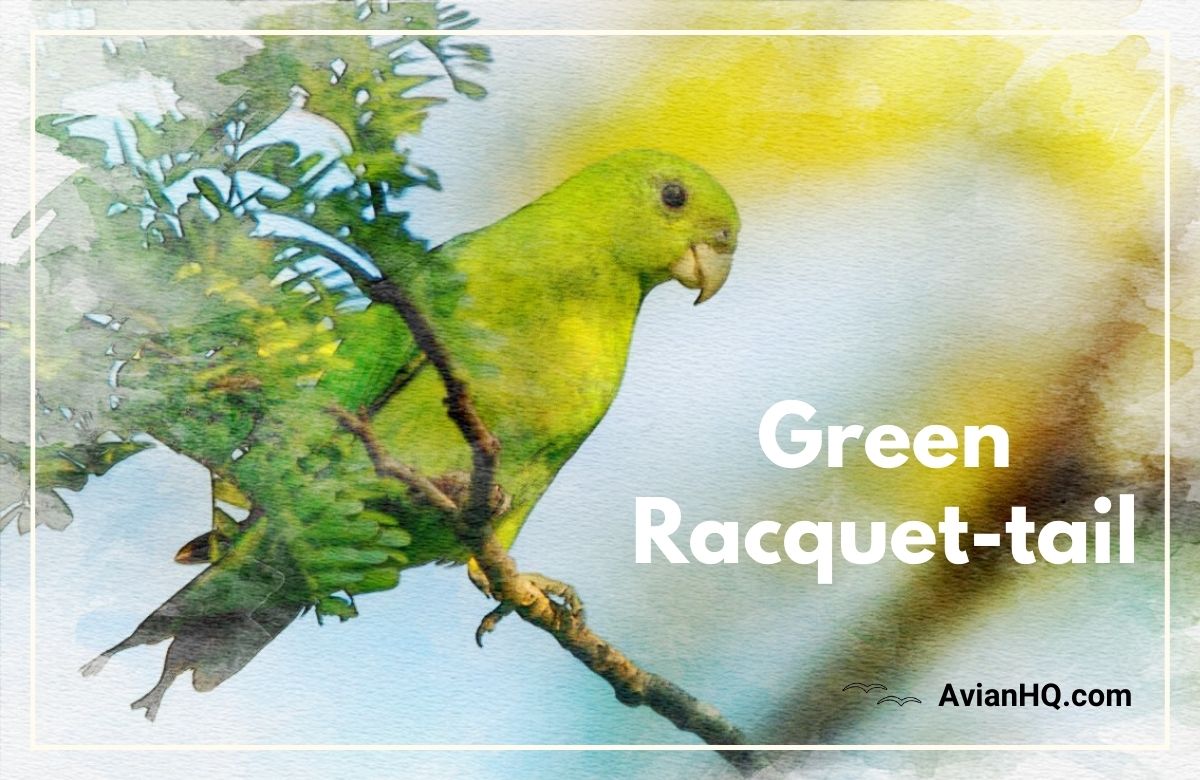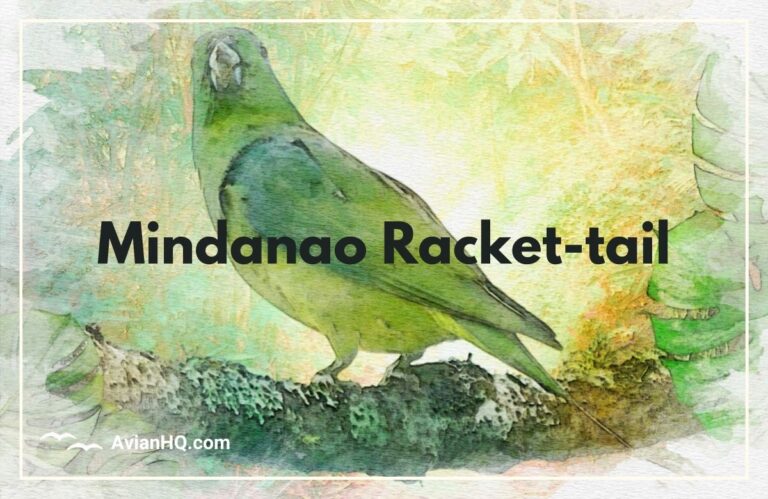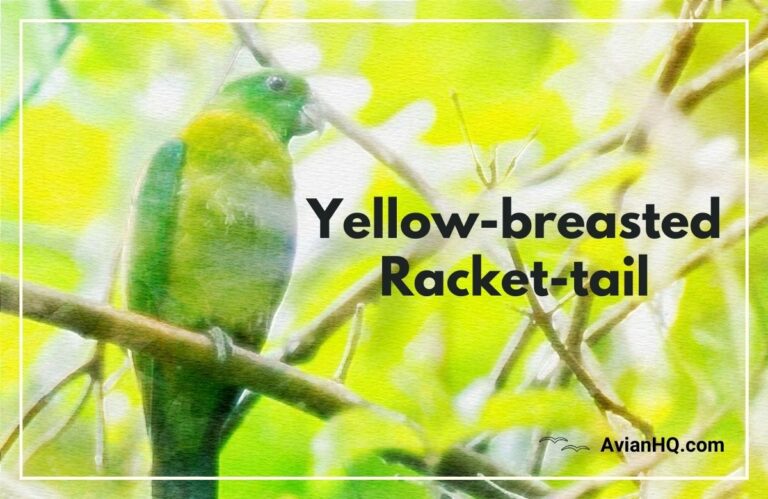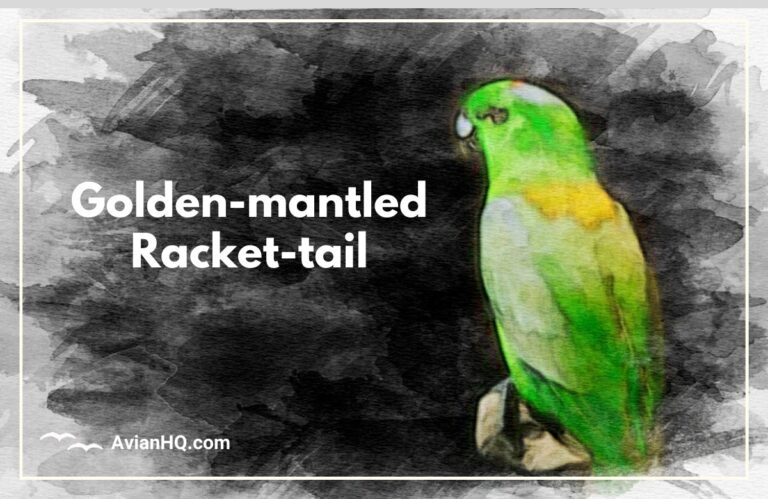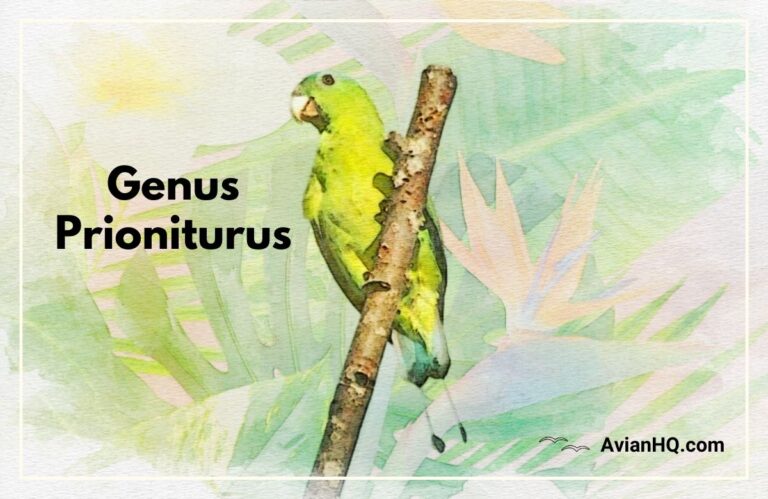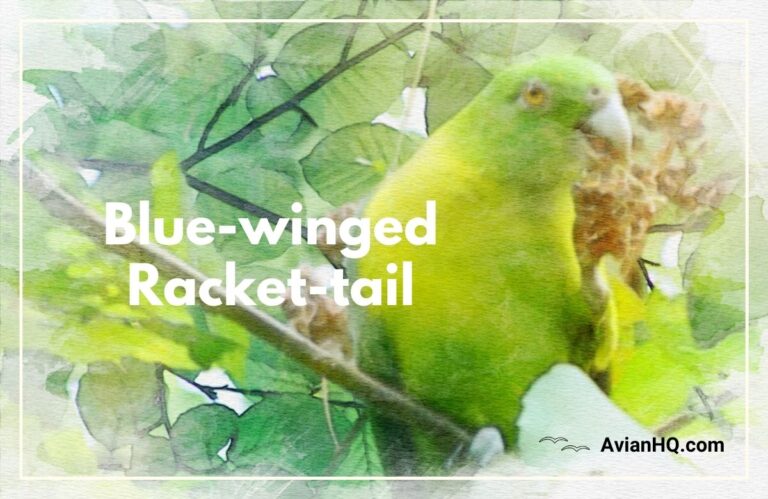Green Racket-tail Parrot (Prioniturus luconensis)
The brilliant green plumage and unique elongated tail feathers make the Green Racket-tail parrot stand out. But this beauty is now rare across the Philippine islands where it is found.
Once a common sight, this endemic parrot has declined sharply. Deforestation and trapping for the pet trade have reduced it’s population.
Conservationists now consider the Green Racket-tail endangered. It’s limited forests homes are vanishing. Without swift action, these birds may soon disappear from the Philippines’ lowland rainforests.
This article will provide a comprehensive overview of the Green Racket-tail parrot. We’ll explore it’s history, physical appearance, habitat, distribution, diet, breeding, conservation status, and the efforts needed to preserve this species.
“Of all the parrots of Luzon, none is more handsome than the Green Racket-tail.” – Frank Hurd, Ornithologist 1919
Physical Appearance
The Green Racket-tail is a medium-sized parrot measuring about 11 inches (29 cm) in length. Their weight ranges between 110-150 grams (4-5 ounces).
This species exhibits sexual dimorphism. The male’s plumage is bright yellow-green overall. His head and underparts are paler green. Two elongated central tail feathers form a racket shape. These feather shafts are bare and black-tipped.
The female has darker green plumage. Her bare tail feather shafts are shorter than the male’s. Juveniles lack the distinctive racketed tail shape. Their tails are rounded without elongated feathers.
The parrot’s bill is pale blue-gray. It’s eyes are a dark brown color. The feet are typical of parrots with zygodactyl toes for grasping.
“The male Green Racket-tail’s brilliant plumage and unique tail make him stand out in the forest canopy.”
Habitat and Distribution
The Green Racket-tail is endemic to the Philippine islands. It’s natural habitat is lowland tropical rainforests.
This parrot inhabits primary forests as well as secondary growth and edge forests. It roams the canopy and forest gaps searching for fruit and seeds.
In the past, the Green Racket-tail had a wide distribution across the islands. It was found from sea level up to elevations of 2,300 feet (700 m).
But habitat loss has severely reduced it’s range. Today the parrot is restricted to portions of Luzon island. It may already be extinct on Marinduque island.
On Luzon, remaining populations cling to fragments of native forest. The largest is found in the Subic Bay area. Smaller groups occur in protected areas like Bataan National Park.
But many former habitats now harbor no Green Racket-tails at all. This endemic bird has vanished from large swaths of it’s historic range.
“Habitat loss has squeezed the Green Racket-tail into small pockets of remaining lowland rainforest.”
Diet
The Green Racket-tail is frugivorous, feeding mainly on fruits and seeds. Their natural diet consists of:
- Fruits – Bananas, berries, figs, and other tropical fruits.
- Seeds – Corn, rice, nuts, and other large seeds.
- Flowers – Nectar and pollen.
This parrot forages widely through the forest for ripening fruits. It uses it’s strong beak to crack into seed pods.
At times, the Green Racket-tail will visit agricultural fields and orchards. It is known to feed on corn, damaging crops.
In captivity, these parrots should be fed a varied diet. Recommended foods include:
- Chopped fruits – banana, apple, grapes (limited), citrus, melons.
- Cooked rice and whole grains – rice, oats, quinoa.
- Vegetables – broccoli, sweet potato, peppers, squash.
- Pellets or seed mix – Include nuts, sunflower, safflower, hemp.
- Occasional treats – corn, egg food, nuts in moderation.
Adequate nutrition supports proper growth, immunity, and reproduction. It is especially important for captive breeding programs working to increase Green Racket-tail numbers.
“A varied diet provides the key nutrients this parrot needs to thrive.”
Breeding and Reproduction
In the wild, the Green Racket-tail nests in tree cavities. Pairs seek out hollows in large rainforest trees.
The breeding season is thought to run from March through June. But few nests have been documented to detail their breeding habits.
Clutch size is unknown but likely 2-4 eggs. The parents incubate the eggs for roughly 26-28 days. After hatching, the chicks are fed by both parents as they grow in the nest.
Fledging occurs around 50-60 days after hatching. The juvenile parrots leave the nest but remain dependent on their parents for several more weeks.
In captivity, breeding success has been limited. But providing proper nesting sites may aid reproduction. An enclosed nest box measuring 25 x 25 x 55 cm (10 x 10 x 22 inches) is recommended.
Allowing the pair privacy, a varied diet, and avoiding disturbance during incubation can help raise healthy chicks. More research is needed on the breeding requirements of this rare species.
“Supporting successful captive breeding is key to boost Green Racket-tail numbers.”
Conservation Status and Efforts
Due to it’s declining population, the Green Racket-tail is classified as Endangered on the IUCN Red List.
There are estimated to be under 2,500 mature birds remaining in the wild. Their numbers continue to fall as deforestation further destroys habitat.
Legal protection is limited. The species is listed under CITES Appendix II which regulates trade. A few protected areas like Bataan National Park harbor populations.
But many threats persist even in protected forests. Logging, illegal trapping, mining, and agricultural expansion are ongoing issues.
Conservation efforts are now urgently needed to prevent extinction:
- Increased legal habitat protections and anti-poaching enforcement. Patrols against trapping.
- Expanded surveys to find all remaining populations. New protected areas created.
- Community engagement and education programs to build support.
- Captive breeding programs to establish an assurance population.
- Ecotourism potential to drive economic incentives for conservation.
With swift action, it may be possible to restore the Green Racket-tail parrot across it’s former range one day. But continued inaction could soon lead to it’s permanent loss.
“Targeted conservation initiatives are crucial for the survival of the Green Racket-tail in the wild.”
Conclusion
The Green Racket-tail parrot is a unique and imperiled bird. This Philippine endemic once flourished across rainforest canopies. But extensive habitat destruction and poaching have decimated it’s populations.
With brilliant plumage and a distinctive racketed tail, this parrot is now a rare sight. Perhaps only a few thousand remain in small scattered pockets of forest. Without dedicated conservation, the Green Racket-tail may soon vanish entirely.
Safeguarding remaining habitat is crucial. Expanding protected areas, enforcing laws, and engaging local communities can all help preserve the parrot. Captive breeding is also vital to create an assurance population.
The fate of the Green Racket-tail highlights the fragility of endemic species. It’s specialized forest home has nearly disappeared. But united efforts could still reverse the decline and ensure this beautiful parrot survives for future generations.
There is no time to lose. The Green Racket-tail’s very existence hangs in the balance. We must act decisively to conserve this natural heritage before it is lost to the Philippines forever.

